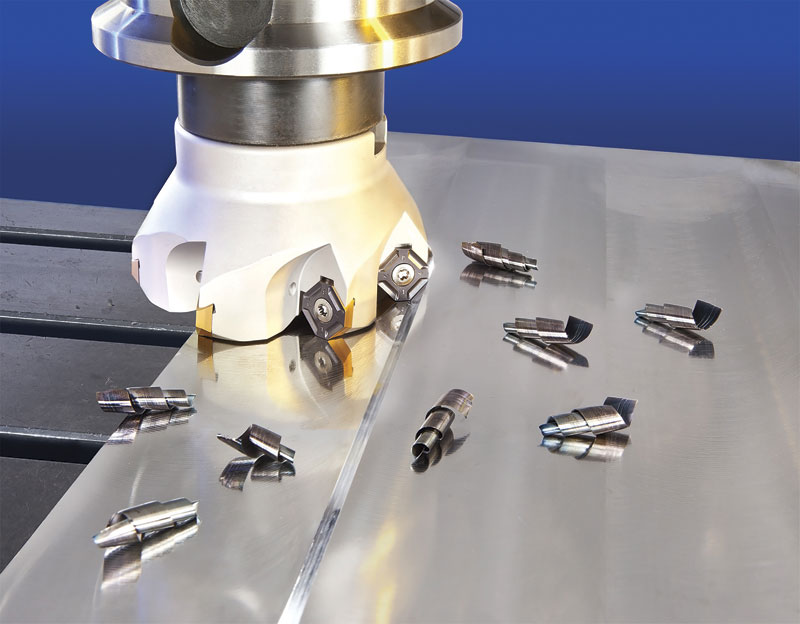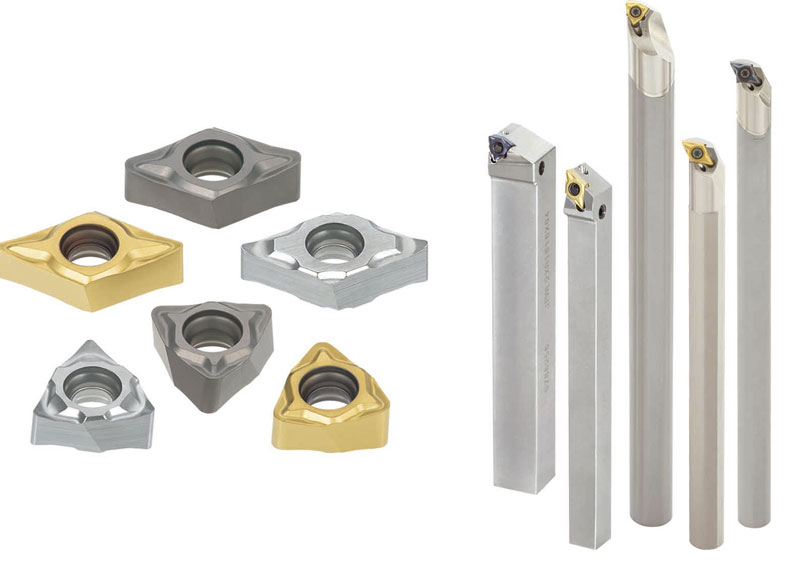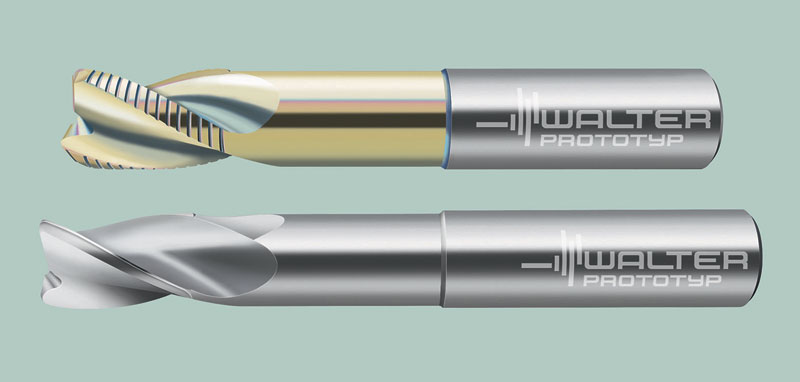by Mary Scianna
Save costs and improve machining performance
Smart manufacturers understand that in today’s competitive market, controlling manufacturing costs is a must. So if you can extend the life of your cutting tools, you can reduce some of your costs. Cutting tool manufacturers also understand this and much of the R&D in cutting tools and recent developments are all about extending the life of a cutting tool. We approached several suppliers and asked them about the ways they’re helping their customers extend cutting tool life.
Here are five of the top factors that are helping manufacturers reduce cutting tool costs.
1. Controlling the Heat.
“The biggest factor contributing to tool life is heat and how it’s controlled,” says Steve Geisel, senior product manager for Iscar Canada. “We’re extending tool life by developing new carbide grades and substrates for inserts, new coatings and chipformers to help reduce the heat generated in the cut.”
Heat during cutting is generated by the speed at which the cutting tools are cutting into the metal. Speed has a direct correlation to tool life. John Mitchell, general manager of Tungaloy Canada says’ it’s the Taylor’s Constant, an equation for determining tool life. “As speed increases, tool life goes down and this is true with any material you’re cutting and with any carbide you’re using as an insert.”
One way cutting tool suppliers help to improve the overall process is to improve the basic tool body, says Pat Nehls, product manager with Walter USA.
“There is always an effort on the part of the cutting tool manufacturer to bring more and more reliability to the process, starting with the tool body and the basic material it is made of. Then different heat treat processes enhance the life of the tool body.”
Heat reduction in metal cutting is a big focus in R&D for Walter, says Nehls. It’s one reason why the company has teamed up with machine tool builder Starrag Group in the area of cyrogenic machining.
“Simply put, we want to remove as much heat from the metalworking process as possible. Heat, caused by the friction of chip removal, will eventually begin to degrade the cutting elements. When we apply liquid CO2 directly at the cutting interface, we can extend the life of the insert. We’ve designed a two-coolant channel system. One for the CO2 and one for an aerosol dry lubricant or air. The requirements for adding CO2 to the machining application make special tools necessary, however, these special tools use standard inserts.”
2. Preparing the Edge
Edge preparation, which essentially means removing material from a cutting tool, plays a critical role in extending cutting tool life as it strengthens the edge, minimizing the possibility of edge chipping, which can lead to tool failure. Cutting tool manufacturers use different methods to prepare an edge, such as radius, and waterfall hone shapes (e.g. brush or nylon filament brush honing).
 While a necessary process, it is also a balancing act between hardness and toughness, says Mitchell. “When you look at an insert for heavy roughing and interrupted cuts, it typically has a heavy edge prep with a chipbreaker. But with a heavier edge prep, it means more forces are applied and that’s the enemy in a less rigid setup where you may have a thin walled part because it will cause chatter.”
While a necessary process, it is also a balancing act between hardness and toughness, says Mitchell. “When you look at an insert for heavy roughing and interrupted cuts, it typically has a heavy edge prep with a chipbreaker. But with a heavier edge prep, it means more forces are applied and that’s the enemy in a less rigid setup where you may have a thin walled part because it will cause chatter.”
3. Designing the tool
How a cutting tool is designed impacts its life. “Tools must be capable of achieving higher metal removal rates while exerting less stress on the spindle,” says Jim Garfield, regional sales manager, Canada, Horn USA. “Tools must be capable of running in various secondary spindle applications where rigidity and horsepower may be challenged. With the emergence of five axis machining, the cutting tool and cutting edge must endure the additional stress of simultaneous, multi-directional movements.”
Novel geometries that utilize both sides of an insert and consist of multiple cutting edges are two approaches cutting tool manufacturers have taken to extend tool life.
For instance, Iscar’s new DoveIQMill indexable face mill, IQ845, is designed with a “dovetail” profile of the insert pocket, which provides for a more secure insert to prevent chatter that can lead to tool failure. The double-sided insert has eight cutting edges, four on each side, which again extends tool life. One of the challenges the company faced in designing the insert was to ensure a positive inclination in the negative or “dovetail” profile design. According to Iscar, the result is “the first indexable milling tool with double-sided inserts that feature a significantly positive cutting edge inclination (more than 20°) to provide a smooth and easy cut.”
 Another example of innovative design to extend tool life comes from Tungaloy. DoMiniTurn is a double-sided positive insert that also employs a “dovetail” design.
Another example of innovative design to extend tool life comes from Tungaloy. DoMiniTurn is a double-sided positive insert that also employs a “dovetail” design.
“A conventional positive insert sits in a pocket and the screw head is the only factor holding the insert in place. The DoMiniTurn insert slides into a dovetail pocket and is screwed down, making the contact in the pocket much more rigid and reducing any possibility of insert movement,” says Mitchell. He says the insert itself has an obtuse relief angle on the non-cutting edge that slides into the dovetail pocket. “When the insert is flipped over, the obtuse angle becomes a positive relief angle while in cut.”
4. Controlling the chips
Controlling the flow of chips during cutting will minimize tool failure. Two ways cutting tool manufacturers are addressing this is by way of through-the-tool coolant designs, and chipformers or chipbreakers designed for specific cutting processes.
An example of through-coolant tooling design is Walter’s Sky-tec milling cutters. Walter’s Supreme MB265 and MB266 feature a proprietary design for the axial coolant exits that eliminates the need for radial exist, which in turn eliminates the possibility of micro fractures on the tools.
Horn’s HP65-grade S224 indexable insert has an internal coolant supply. The coolant jets act directly on the cutting zone, explains Garfield. The funnel-shaped nozzle creates a coolant jet, which supports chip forming and reduces chip build-up. “This type of internal cooling largely prevents the formation of built-up edges and fractures on the cutting edge. Unlike conventional cooling methods, this system enables higher cutting parameters, which allow the tool to be used more cost effectively.”
Chipformers or chipbreakers help direct chips away from the cutting edge. “They can extend tool life significantly,” says Mitchell. In fact, he says chipbreakers’ more important function is to extend tool life, not just manage chips.
“Because of how they’re designed, chipbreakers can help keep the heat in the chips and not on the insert itself, so you’re able to extend tool life.”
Iscar’s Geisel adds “in the past, chipformers were generic for all types of materials, but we’ve developed them for different material groups [three new chipformers for finishing medium and rough turning of steel with reinforced cutting edges and positive rake angles, F3P, M3P and R3P]. They help optimize the chip form, how the chip is directed to keep it away from curling in front of the cutting edge and ensure it’s cutting away from that edge.”
5. Coating the inserts
“All materials require different amounts of heat to be machined, but of course you can’t have too much heat because that damages the cutting tool and impacts the cutting process,” says Geisel. One way to combat heat is to apply special coatings on tooling. The two main coatings cutting tool manufacturers use are CVD and PVD coatings.
CVD coatings are typically thicker than PVD coatings and help to protect the carbide substrate from heat. They also offer good wear resistance. However, since they’re thicker coatings, they don’t adhere well to sharp edges, so CVD coated inserts typically have to be honed for better edge prep. PVD coatings are thinner coatings so they’re easier to apply to very sharp edges and adhere better to sharp corners than CVD coatings.
 o get the best of both worlds, cutting tool suppliers have developed proprietary multi-layer coatings of materials such as aluminum oxide and titanium nitride.
o get the best of both worlds, cutting tool suppliers have developed proprietary multi-layer coatings of materials such as aluminum oxide and titanium nitride.
Tungaloy applies a proprietary coating it calls Premium-Tec, to all of its grades, which Mitchell says “makes the surface slippery and smooth so chips fly off.”
Walter offers its Tiger-tec Silver. It recently introduced the coating for ISO P machining. The Tiger-tec Silver coating has been optimized with aluminum oxide, which the company says offers higher cutting productivity, up to a 75 per cent increase in output. SMT
